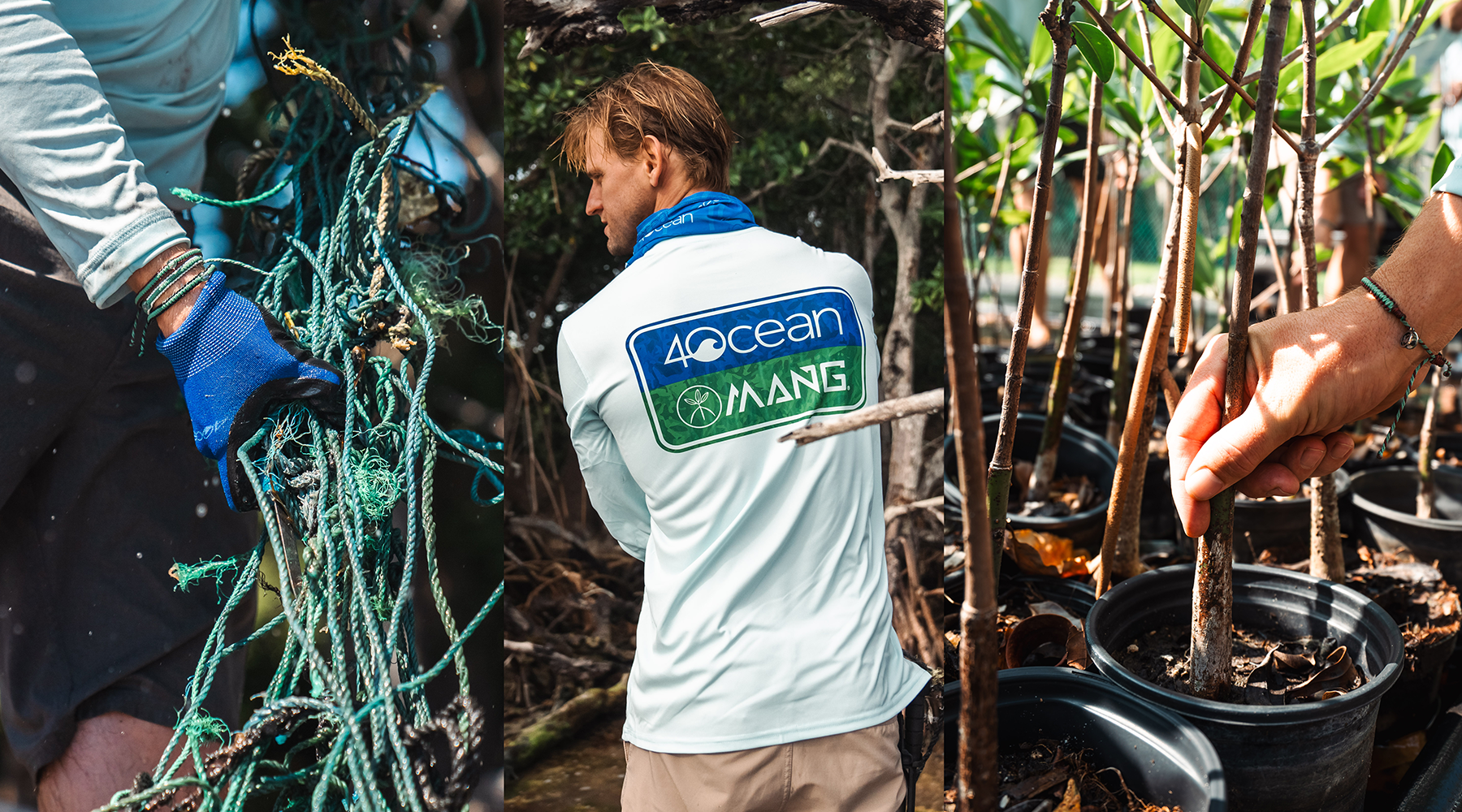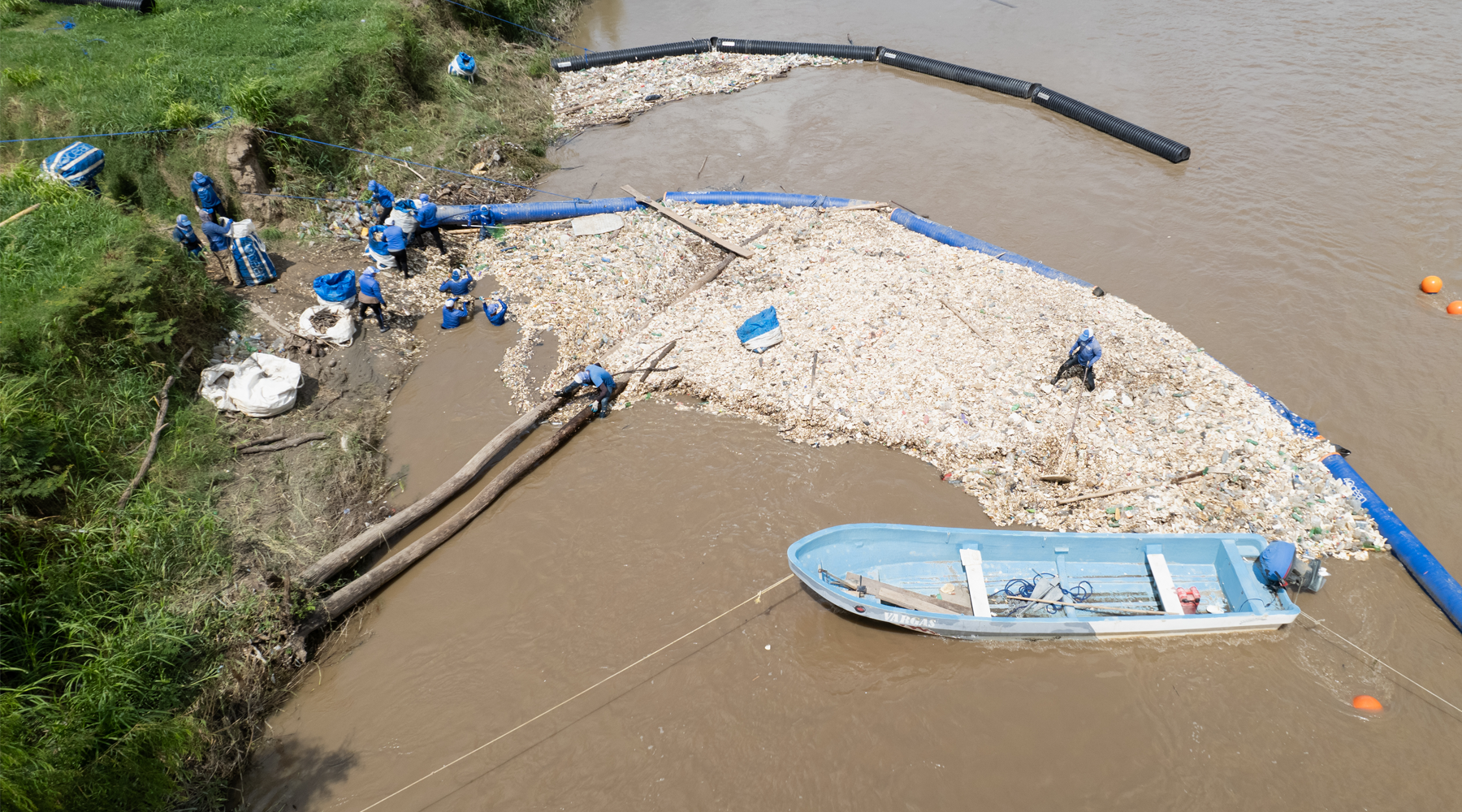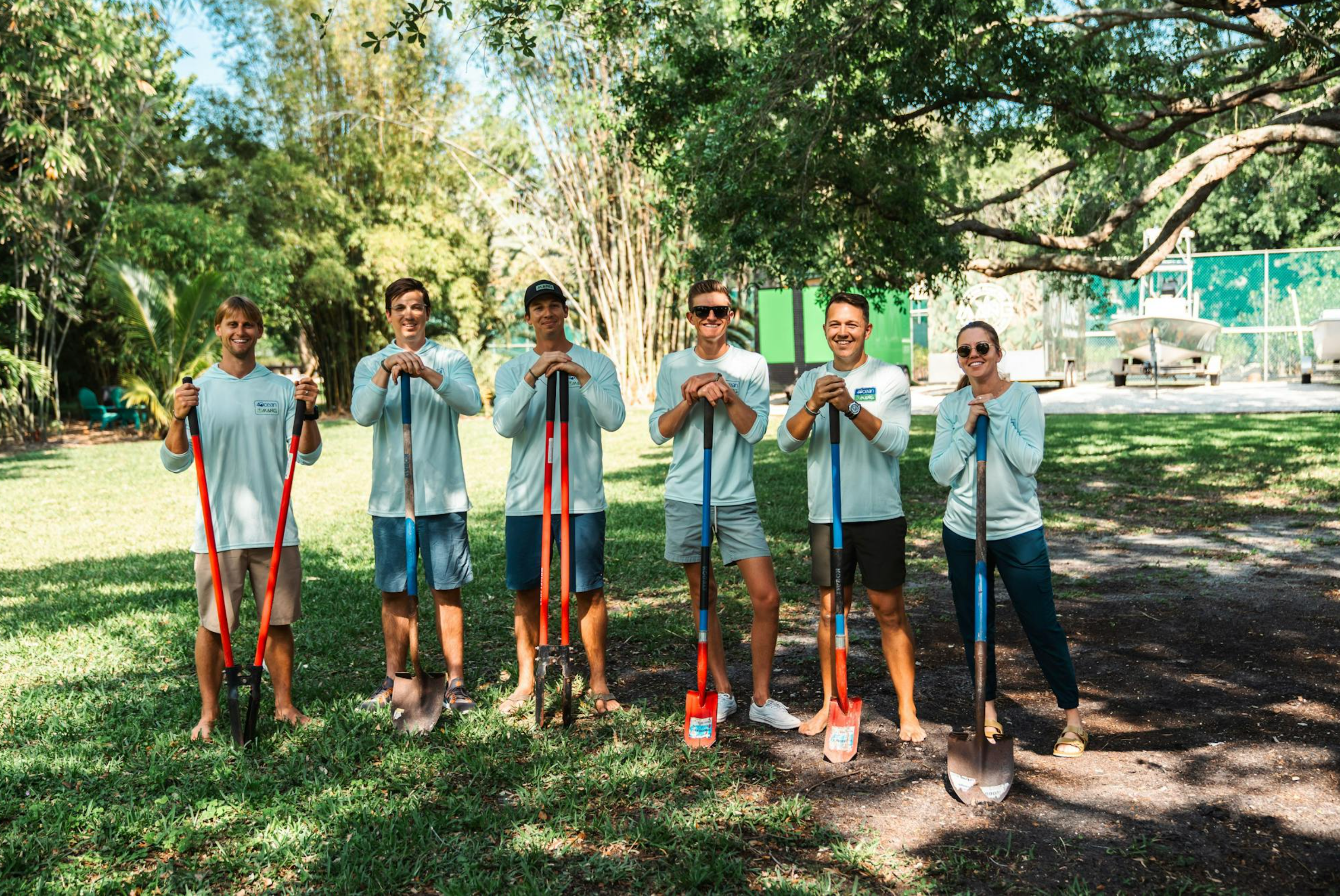
5 MIN READ
8-19-2024
Mangroves Are Suffocating
From Plastic
Mikaela Walsh, 4ocean Research Analyst
Mangrove forests scour for release from the suffocating plastic pollution entangling their roots.
Mangrove forests are among the most essential marine ecosystems in the world, yet they are vastly underappreciated. Fifty percent of mangrove ecosystems are at risk of collapse. They are primarily found in tropical and subtropical environments and cover around 15 percent of the world's coastlines.

SOURCE: IUCN.org
Not only are mangroves essential for the aquatic environment and animals, but they are also vital for coastal communities.
- Aid In Coastal Protection: reduce flooding and erosion for coastal communities.
- Improve Water Quality: Filter pollutants and absorb nutrients, making the water cleaner by preventing further chemical exposure.
- Carbon Storage: Mangroves absorb more carbon in their leaves, branches, and roots than any other ecosystem, which reduces greenhouse gases.
- Biodiversity and Nursery: many organisms find protection in their interconnecting root system.
Mangroves play a vital role in protecting coastal communities and aquatic organisms, but they are under severe threat globally—a significant threat: Plastic.

Plastic pollution undoubtedly is destroying aquatic ecosystems across the globe, especially mangrove forests. Mangroves have a unique ariel root system that intertwines with surrounding trees, reducing erosion and flooding and protecting nearby coastal communities. Due to their root system, they are very susceptible to undesired plastic debris getting entangled in their root systems. Nearby, macroplastic pollution that floats past these forests gets stuck in the roots and branches, causing more plastic debris to get trapped. When this plastic gets stuck in the mangrove trees, it blocks sunlight and water from the tree systems. It has been observed that mangrove forests have recorded some of the highest densities of plastic pollution.
Recent observations of plastic debris and mangrove forests have shown a decrease in mangrove health due to:
- Affected photosynthesis by blocking the sun’s rays.
- Hindered the ability of the mangrove to absorb pollutants and nutrients in the roots.
- Entangled debris led to root deformation.
- Disurtbed the quality of the soil.

New mangrove trees are also an issue for mangroves when dealing with the effects of plastic pollution. One reason why mangrove forests across the globe are at risk for collapse is that the seedlings are having difficulty rooting in the ground. Plastic entanglement is the newest threat, along with natural threats of crashing waves and predators already in the mix.
Many times, seedlings have been observed completely overtaken by plastic debris. Ghost nets and plastic bags negatively impact seedling survival, completely overtaking the new organism that is trying to flourish into a strong tree.
Consequently, another type of plastic pollution includes the effects of microplastic on the ecosystem. Microplastic has been found in the mangrove sediments and surface water. Further investigation needs to be done on the impact of microplastic pollution on mangrove survival, but research suggests that microplastic absorption is affecting mangrove survival.
Furthermore, microplastic ingestion has been found in the biodiversity of mangrove forests. Up to 100% of the individuals examined living in mangrove forests have microplastic ingestion. These species included clams, crabs, fishes, mollusks, gastropods, and sponges.

At 4ocean, we care about the vital importance of mangrove forests. We have observed the massive amounts of plastic debris entangled in mangrove forests. When we traveled to the Florida Keys for one of our recent large team cleanup projects, we removed almost 1,000 pounds of ghost nets from the mangrove forests in one day.
Mangroves are essential for the survival of the ocean and coastal communities across the globe. However, half of the mangrove forests are at risk of collapse, and we need your help to restore and clean these ecosystems.
We partnered with MANG to save mangrove forests. With every purchase from the mange collection, one mangrove tree will be planted, and five pounds of plastic will be removed from the ocean, waterways, and coastlines.
Big shoutout to Boat Max Online and Florida Repower for their support of our cleanup operations!





